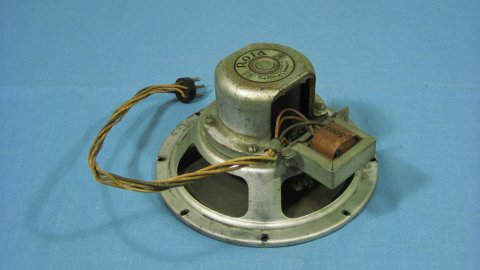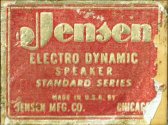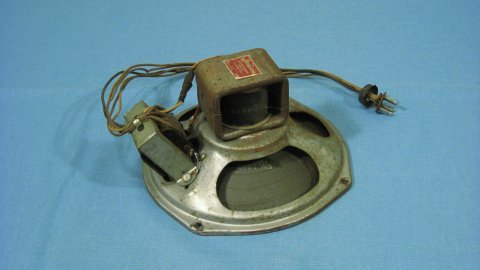|
First measure the DC resistance of the voice coil with an ohmmeter. Select an audio amplifier that
can drive that impedance. Connect a permanent magnet speaker to the amplifier
and play some audio at a moderate level.
Stay below about one volt. Then connect the voice coil of the field coil speaker to the amplifier
in place of the permanent magnet speaker.
You may hear a faint amount of audio with no power in the field coil
due to residual magnetism in the electromagnet. Connect your DC power supply to the
field coil. Start with a low current. Increase the current gradually into the range calculated
in the table above. Check that the field coil does not become too warm.
As you increase the current in the field coil, the audio from the speaker will increase. When it plays as
loud as the permanent magnet speaker, you have enough current. If your field coil is becoming
warm, you will have to reduce the current.
The level of bass at resonance does not change much with the field coil current. The level of
the midrange and treble will be strongly affected by the field coil current. To some extent
you can adjust the balance of bass to midrange to match your system needs with field coil current.
For more on the relationship of "B" created by the field coil magnet current and sensitivity watch
Fresh Look at T/S Parameters on the SMWTMS YouTube Channel.
Historically a radio with a field coil speaker did not have a separate power supply for the speaker magnet.
The field coil was used as a choke in the power supply for the entire radio. The field coil would
be designed to use the total current of the radio. This is why you will find many different
resistances on field coils. The substantial voltage drop in the field coil resistance was compensated for
in the deign of the power supply transformer of the radio. In the examples on this page,
the radio power transformer would be specified to have about 100 more volts than the radio needed.
There would be some hum in the speaker, though that might be cancelled by the hum bucking coil mentioned
at the top of this page.
Some inquires about this page asked if a field coil speaker could be used in a guitar amplifier.
Obviously one can, but the external power supply for the field coil would be quite a bit to add.
Tone quality of a field coil speaker in a guitar amplifier will depend on the field coil current.
It might be interesting to use a variable DC power supply for the filed coil speaker in a guitar amplifier.
Trying to add the field coil using the historical design as a choke in the power supply would
cause a substantial loss of output power unless the power transformer was replaced as well.
|





